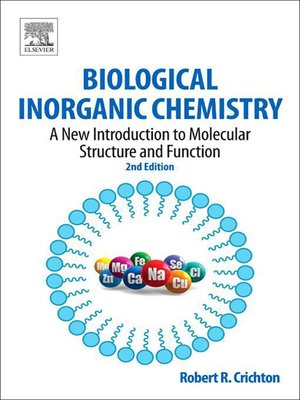Biological Inorganic Chemistry
ebook ∣ A New Introduction to Molecular Structure and Function
By Robert R. Crichton

Sign up to save your library
With an OverDrive account, you can save your favorite libraries for at-a-glance information about availability. Find out more about OverDrive accounts.
Find this title in Libby, the library reading app by OverDrive.



Search for a digital library with this title
Title found at these libraries:
| Library Name | Distance |
|---|---|
| Loading... |
Biological Inorganic Chemistry: A New Introduction to Molecular Structure and Function, Second Edition, provides a comprehensive discussion of the biochemical aspects of metals in living systems. Beginning with an overview of metals and selected nonmetals in biology, the book then discusses the following concepts: basic coordination chemistry for biologists; structural and molecular biology for chemists; biological ligands for metal ions; intermediary metabolism and bioenergetics; and methods to study metals in biological systems. The book also covers metal assimilation pathways; transport, storage, and homeostasis of metal ions; sodium and potassium channels and pumps; magnesium phosphate metabolism and photoreceptors; calcium and cellular signaling; the catalytic role of several classes of mononuclear zinc enzymes; the biological chemistry of iron; and copper chemistry and biochemistry. In addition, the book discusses nickel and cobalt enzymes; manganese chemistry and biochemistry; molybdenum, tungsten, vanadium, and chromium; non-metals in biology; biomineralization; metals in the brain; metals and neurodegeneration; metals in medicine and metals as drugs; and metals in the environment.
- Winner of a 2013 Textbook Excellence Awards (Texty) from the Text and Academic Authors Association - Readable style, complemented by anecdotes and footnotes - Enables the reader to more readily grasp the biological and clinical relevance of the subject - Color illustrations enable easy visualization of molecular mechanisms







